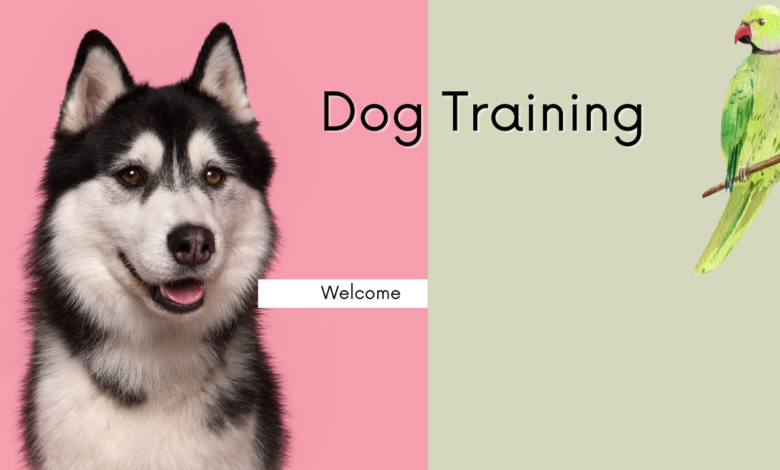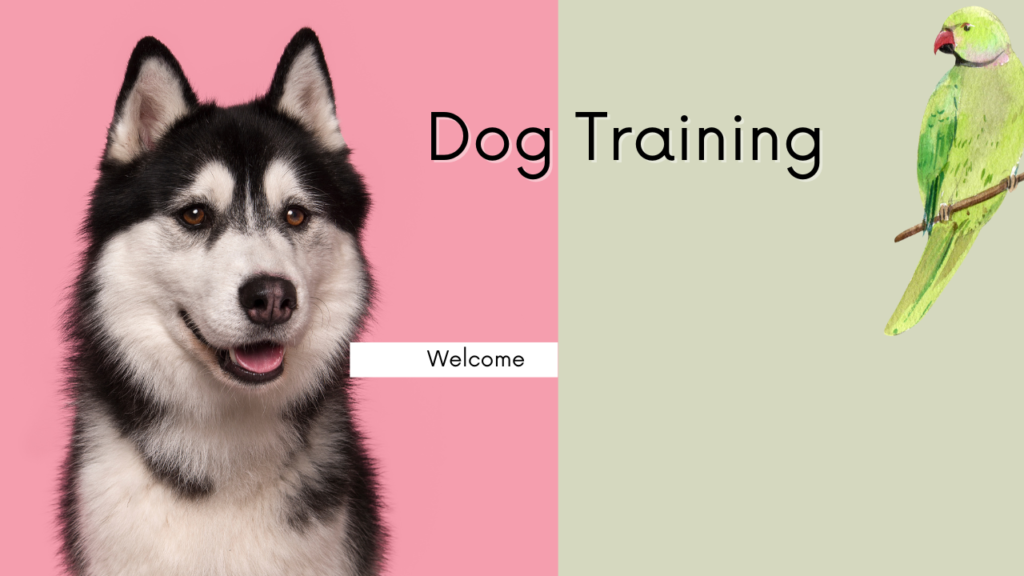
Dog training is an essential part of pet ownership that ensures a harmonious relationship between you and your canine companion. A well-trained dog is not only more enjoyable to be around but also safer and happier.

This article explores effective dog training techniques, including positive reinforcement, consistency, socialization, and dealing with common behavioral issues.
Positive Reinforcement
Positive reinforcement is one of the most effective and humane training methods. It involves rewarding your dog for good behavior, encouraging them to repeat the behavior. Rewards can include treats, praise, or playtime. The key is to offer the reward immediately after the desired behavior so the dog associates the action with the positive outcome.
Start with basic commands like “sit,” “stay,” “come,” and “down.” For instance, to teach “sit,” hold a treat above your dog’s nose and move it slightly back. As your dog follows the treat, their bottom will naturally lower into a sitting position. Once they sit, immediately give the treat and praise them. Repeat this process until your dog understands the command.
Positive reinforcement also involves ignoring undesirable behaviors rather than punishing them. For example, if your dog jumps on guests, avoid giving them attention. Instead, wait until they are calm and then reward them with praise or a treat. This approach helps dogs learn that calm behavior is more rewarding.
Consistency and Patience
Consistency is crucial in dog training. Use the same commands and cues for specific behaviors to avoid confusing your dog. If one family member uses “down” to mean “lie down” and another uses “off” to mean the same thing, the dog may become confused. Establishing a set of standard commands that everyone in the household follows will make training more effective.
Patience is equally important. Dogs, especially puppies, have short attention spans and may take time to grasp new commands. Avoid getting frustrated and always end training sessions on a positive note, even if progress is slow. Short, frequent training sessions are more effective than long, exhausting ones. Aim for sessions of about 10-15 minutes, multiple times a day.
Socialization
Socialization is a critical aspect of dog training, particularly for puppies. It involves exposing your dog to various people, animals, environments, and experiences to build their confidence and reduce fear. A well-socialized dog is less likely to develop anxiety, aggression, or other behavioral issues.
Start socialization early, ideally between 3 and 14 weeks of age. Introduce your puppy to different settings, such as parks, pet-friendly stores, and busy streets. Allow them to interact with other dogs and people, ensuring that these experiences are positive. Gradual exposure helps prevent overwhelming the puppy, which could lead to fear or anxiety.
Even adult dogs can benefit from socialization. While it may take more time and patience, introducing them to new situations gradually can help them become more adaptable and less reactive.
Dealing with Common Behavioral Issues
While training your dog, you may encounter common behavioral issues such as barking, chewing, and leash pulling. Addressing these issues early and consistently is essential for successful training.
- Barking: Dogs bark for various reasons, including boredom, fear, and excitement. Identify the cause of the barking and address it accordingly. For instance, if your dog barks out of boredom, provide more mental and physical stimulation. Use commands like “quiet” and reward your dog when they stop barking.
- Chewing: Chewing is a natural behavior for dogs, especially puppies. However, destructive chewing can be problematic. Provide appropriate chew toys and supervise your dog to prevent them from chewing on furniture or other items. If you catch them chewing on something inappropriate, redirect their attention to a toy and praise them for chewing it.
- Leash Pulling: Leash training is essential for enjoyable walks. To discourage pulling, stop walking when your dog pulls and wait until they return to your side. Reward them with a treat or praise when they walk beside you. Consistency is key; avoid letting your dog pull you along, as this reinforces the behavior.
Advanced Training and Activities
Once your dog masters basic commands, consider advanced training and activities to keep them mentally and physically stimulated. Agility training, obedience competitions, and trick training are excellent ways to challenge your dog and strengthen your bond.
Agility training involves navigating obstacles like tunnels, jumps, and weave poles. It enhances your dog’s coordination and confidence while providing physical exercise. Obedience competitions test your dog’s ability to follow commands accurately, while trick training can be a fun way to teach your dog entertaining behaviors like “roll over” or “play dead.”
Conclusion
Training your dog is an ongoing process that requires dedication, patience, and consistency. By using positive reinforcement, maintaining consistency, socializing your dog, and addressing behavioral issues, you can raise a well-behaved and happy canine companion. Remember, the goal of training is not just to teach commands but to build a strong, trusting relationship with your dog. A well-trained dog is a joy to live with and a proud reflection of your efforts as a responsible pet owner.




